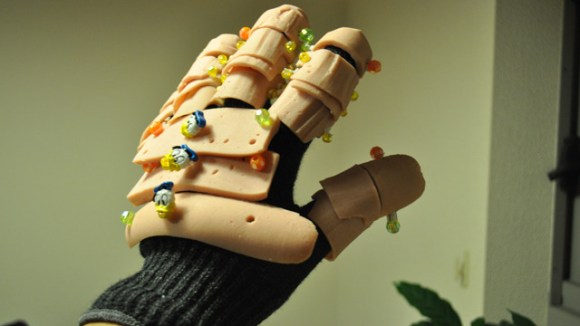 For those living in colder climates using a smartphone creates a major dilemma. We want to check our messages but wearing gloves often renders our touch screens useless. Sure, there are specialized smartphone compatible gloves, but going that way severely limits your choices of style and color.
For those living in colder climates using a smartphone creates a major dilemma. We want to check our messages but wearing gloves often renders our touch screens useless. Sure, there are specialized smartphone compatible gloves, but going that way severely limits your choices of style and color.
Driven to the edge with this problem, Yoshiaki Owari of the Daily Portal Z came up with a groundbreaking way to keep your hands warm, stylish, and functional. In addition, you’re left with a tasty dish at the end of the day when you use Sausage Gloves!
■ Inception
Like many great inventions, Sausage Gloves were born out of necessity. Originally Yoshiaki thought of developing a high-tech fiber or coating that would transform any gloves into smartphone-compatible gloves. However, that would be really, really hard.
Instead he drew on the age-old wisdom of the internet which taught us how smartphones were designed with sausage compatibility.
The answer suddenly became clear as crystal. Simply attach sausages to the fingertips of your favorite glove. This would allow you to use any handwear you like but retain the use of your mobile devices. It’s tasty too.
■ Troubleshooting
A sausage tip (in this case fish meat sausage) was hollowed out enough so that a gloved finger may enter. Preliminary fittings were successful.
Also, the sausage – even after modification – retained its smartphone compatibility. It’s amazing the foresight that Steve Jobs must have had to include this compatibility when initially designing the iPhone.
However, there were some critical design flaws. The sausage tip felt unbalanced on the hand. It was spicy and delicious, but it felt awkward. Also the pale pinkish color on a single finger spoiled the joie de vivre that the naked gloves alone once exuded.
■ Timeless Engineering
The first thought was to simply create gloves made of sausages, but that couldn’t work because sausages aren’t elastic. Instead, to rectify both initial design issues, Yoshiaki looked back to the Sengoku Period of Japan and its samurai armor technology.
He carved out the fish sausage into armor plates that would conform to the various contours of the human hand comfortably. The first hurdle was how to connect the plates. Anyone in the garment industry will tell you sausage is a notoriously weak textile. Yoshiaki circumvented this by using straws. The straws both reinforce the sausage and provide holes for linking.
Yoshiaki intended to use some Armani buttons to lock the sausage armor together. However, no such store carried these buttons on his way home from work. He had to settle for these beads from his local 100 yen shop.
Preliminary testing of the armor was an enormous success.
It was time to complete the Sausage Glove prototype.
The gloves was comfortable as well as stylish and even allowed for single-hand smartphone usage.
The perfect solution for winter touchscreen use had been found. But there’s more!
■ Eco-Friendly
Of course, sausage – fish or otherwise – has a limited period of use. However, this can be turned into a positive at the end of the day. First remove the sausage armor plating from your gloves and place into a bowl.
As an added bonus, you’ll find your glove is left looking like a festive Christmas tree.
Next, grind down the plating and shape it into a patty.
Then fry it up and serve with a demi-glace along with a side of greens. In the end you’ll have a surprisingly delicious and fluffy glove as a light dinner or midnight snack.
It’s the figure-eight of life. A fish is ground into meat and then shaped into sausage, the sausage is then forged into a glove and worn. After, the glove is ground back into meat and consumed. The food is digested and flushed into the ocean where it’s eaten by algae which is in turn eaten by insects or crustaceans which are then eaten by fish.
If all goes well that very same fish sausage will have returned to Yoshiaki’s hand in the not so distant future. So next time you want to keep your hands warm and use your smartphone, just build a fish sausage exo-skeleton with Donald Duck buttons. The Earth will thank you for it.
Source: Daily Portal Z (Japanese)
Images courtesy of Daily Portal Z

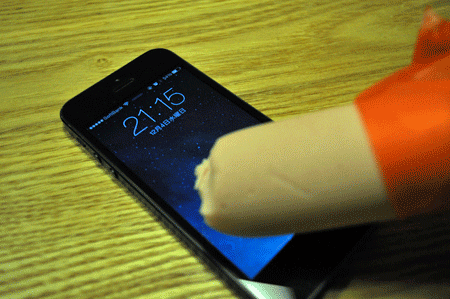
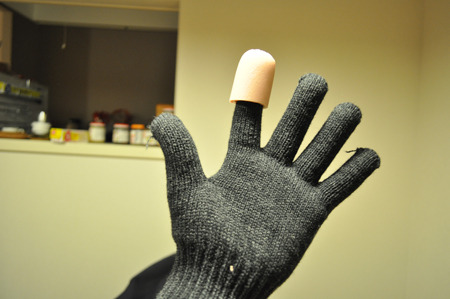
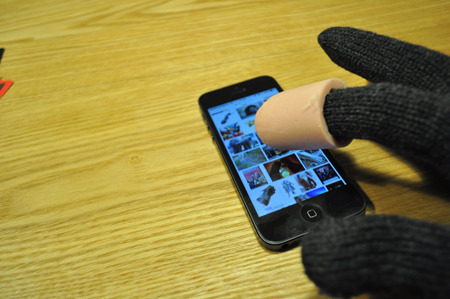
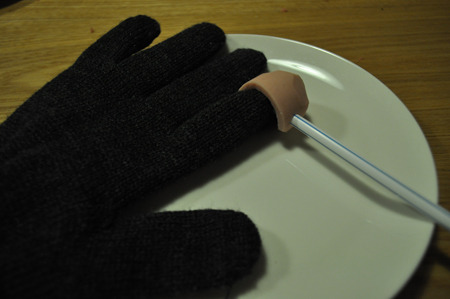
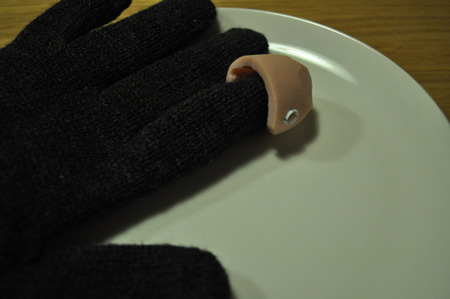
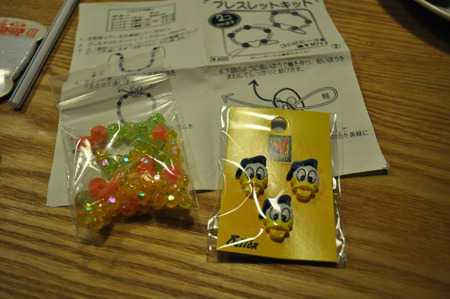

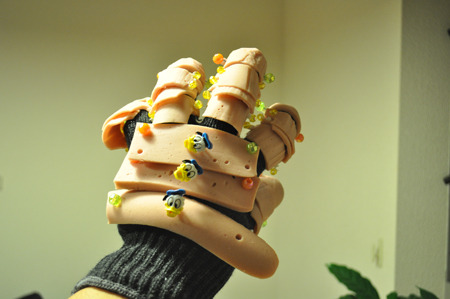
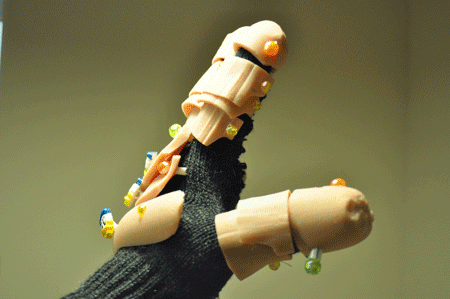
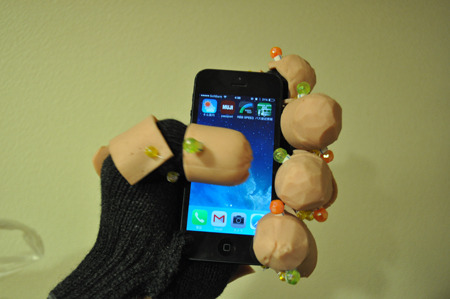
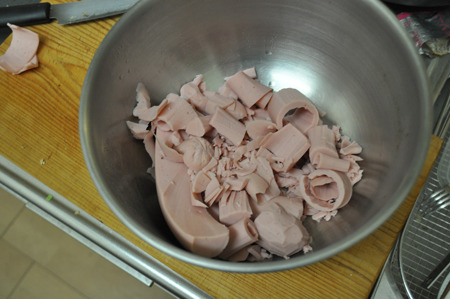

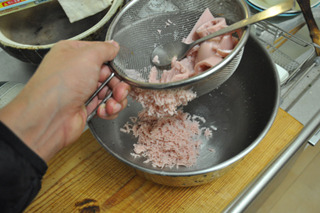
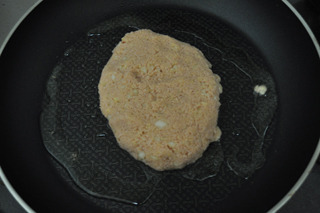
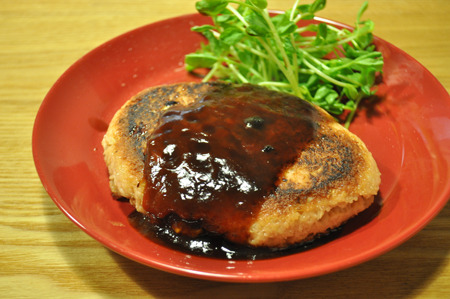
 Japan’s Homo Sausage now comes with cheese
Japan’s Homo Sausage now comes with cheese We brave the winter with the lowest-rated gloves from Amazon Japan
We brave the winter with the lowest-rated gloves from Amazon Japan We make a pair of gloves that are super-effective against playing Pokémon GO in the cold
We make a pair of gloves that are super-effective against playing Pokémon GO in the cold New Studio Ghibli gloves will warm your heart and hands this winter
New Studio Ghibli gloves will warm your heart and hands this winter Don’t forget to eat your special sports fish sausage if you’re exercising in Japan
Don’t forget to eat your special sports fish sausage if you’re exercising in Japan McDonald’s new Happy Meals offer up cute and practical Sanrio lifestyle goods
McDonald’s new Happy Meals offer up cute and practical Sanrio lifestyle goods All-you-can-drink Starbucks and amazing views part of Tokyo’s new 170 meter-high sky lounge
All-you-can-drink Starbucks and amazing views part of Tokyo’s new 170 meter-high sky lounge Beautiful Sailor Moon manhole cover coasters being given out for free by Tokyo tourist center
Beautiful Sailor Moon manhole cover coasters being given out for free by Tokyo tourist center Studio Ghibli glasses cases let anime characters keep an eye on your spectacles
Studio Ghibli glasses cases let anime characters keep an eye on your spectacles Kyoto’s 100 Demons yokai monster parade returns!
Kyoto’s 100 Demons yokai monster parade returns! Hamster abandoned at Tokyo ramen restaurant gets new home
Hamster abandoned at Tokyo ramen restaurant gets new home Starbucks reopens at Shibuya Scramble Crossing with new look and design concept
Starbucks reopens at Shibuya Scramble Crossing with new look and design concept Super Nintendo World expansion gets delayed for several months at Universal Studios Japan
Super Nintendo World expansion gets delayed for several months at Universal Studios Japan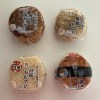 Should you warm up your convenience store onigiri rice balls in the microwave?【Taste test】
Should you warm up your convenience store onigiri rice balls in the microwave?【Taste test】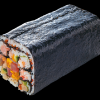 The greatest sushi roll in Japanese history is actually nine sushi rolls in one【Photos】
The greatest sushi roll in Japanese history is actually nine sushi rolls in one【Photos】 Disney princesses get official manga makeovers for Manga Princess Cafe opening in Tokyo
Disney princesses get official manga makeovers for Manga Princess Cafe opening in Tokyo More foreign tourists than ever before in history visited Japan last month
More foreign tourists than ever before in history visited Japan last month Beautiful new Final Fantasy T-shirt collection on the way from Uniqlo【Photos】
Beautiful new Final Fantasy T-shirt collection on the way from Uniqlo【Photos】 Is the new Shinkansen Train Desk ticket worth it?
Is the new Shinkansen Train Desk ticket worth it? Foreign English teachers in Japan pick their favorite Japanese-language phrases【Survey】
Foreign English teachers in Japan pick their favorite Japanese-language phrases【Survey】 Japanese convenience store packs a whole bento into an onigiri rice ball
Japanese convenience store packs a whole bento into an onigiri rice ball We try out “Chan Ramen”, an underground type of ramen popular in the ramen community
We try out “Chan Ramen”, an underground type of ramen popular in the ramen community Studio Ghibli releases Kiki’s Delivery Service chocolate cake pouches in Japan
Studio Ghibli releases Kiki’s Delivery Service chocolate cake pouches in Japan Japan’s bone-breaking and record-breaking roller coaster is permanently shutting down
Japan’s bone-breaking and record-breaking roller coaster is permanently shutting down New definition of “Japanese whiskey” goes into effect to prevent fakes from fooling overseas buyers
New definition of “Japanese whiskey” goes into effect to prevent fakes from fooling overseas buyers Our Japanese reporter visits Costco in the U.S., finds super American and very Japanese things
Our Japanese reporter visits Costco in the U.S., finds super American and very Japanese things Studio Ghibli unveils Mother’s Day gift set that captures the love in My Neighbour Totoro
Studio Ghibli unveils Mother’s Day gift set that captures the love in My Neighbour Totoro Foreign passenger shoves conductor on one of the last full runs for Japan’s Thunderbird train
Foreign passenger shoves conductor on one of the last full runs for Japan’s Thunderbird train Domino’s Japan now sells…pizza ears?
Domino’s Japan now sells…pizza ears? New Japanese KitKat flavour stars Sanrio characters, including Hello Kitty
New Japanese KitKat flavour stars Sanrio characters, including Hello Kitty Kyoto creates new for-tourist buses to address overtourism with higher prices, faster rides
Kyoto creates new for-tourist buses to address overtourism with higher prices, faster rides Sales of Japan’s most convenient train ticket/shopping payment cards suspended indefinitely
Sales of Japan’s most convenient train ticket/shopping payment cards suspended indefinitely Sold-out Studio Ghibli desktop humidifiers are back so Totoro can help you through the dry season
Sold-out Studio Ghibli desktop humidifiers are back so Totoro can help you through the dry season Japanese government to make first change to romanization spelling rules since the 1950s
Japanese government to make first change to romanization spelling rules since the 1950s Ghibli founders Toshio Suzuki and Hayao Miyazaki contribute to Japanese whisky Totoro label design
Ghibli founders Toshio Suzuki and Hayao Miyazaki contribute to Japanese whisky Totoro label design Doraemon found buried at sea as scene from 1993 anime becomes real life【Photos】
Doraemon found buried at sea as scene from 1993 anime becomes real life【Photos】 Tokyo’s most famous Starbucks is closed
Tokyo’s most famous Starbucks is closed One Piece characters’ nationalities revealed, but fans have mixed opinions
One Piece characters’ nationalities revealed, but fans have mixed opinions We asked a Uniqlo employee what four things we should buy and their suggestions didn’t disappoint
We asked a Uniqlo employee what four things we should buy and their suggestions didn’t disappoint Princesses, fruits, and blacksmiths: Study reveals the 30 most unusual family names in Japan
Princesses, fruits, and blacksmiths: Study reveals the 30 most unusual family names in Japan This buttery, garlicky sausage and rice recipe is simple, cheap, and pretty much to die for
This buttery, garlicky sausage and rice recipe is simple, cheap, and pretty much to die for Wear your cats on your hands this winter—They’ll wag their tails with every smartphone swipe
Wear your cats on your hands this winter—They’ll wag their tails with every smartphone swipe We bought a sausage egg roll maker because of social media, but was it worth it?
We bought a sausage egg roll maker because of social media, but was it worth it? Hand-made…hands?! Japanese girl has the perfect, horrible solution to going to the movies alone
Hand-made…hands?! Japanese girl has the perfect, horrible solution to going to the movies alone Pizza Hut Taiwan serves up a slam dunk with…an edible basketball and hoop
Pizza Hut Taiwan serves up a slam dunk with…an edible basketball and hoop We test the taste of the King’s Dog from Burger King
We test the taste of the King’s Dog from Burger King Winter 2016 Cat Punch Gloves from Felissimo come with adorable new details
Winter 2016 Cat Punch Gloves from Felissimo come with adorable new details New McDonald’s Japan menu item is lazy, looks suspiciously like dog food, says Japanese Net
New McDonald’s Japan menu item is lazy, looks suspiciously like dog food, says Japanese Net We sent Mr. Sato off to Yakiniku Camp, the restaurant where you cook your own food
We sent Mr. Sato off to Yakiniku Camp, the restaurant where you cook your own food Learn how to make sushi with a professional Japanese sushi chef in Tokyo
Learn how to make sushi with a professional Japanese sushi chef in Tokyo No Swedish meatballs but carbs galore: ranking all 16 Harajuku IKEA flatbreads【Taste Test】
No Swedish meatballs but carbs galore: ranking all 16 Harajuku IKEA flatbreads【Taste Test】 Japan’s love affair with sea bugs continues — sausage isopods now available as gachapon toys!
Japan’s love affair with sea bugs continues — sausage isopods now available as gachapon toys! Japanese citrus farmers deal with crop-stealing wild boars by killing them, selling their meat
Japanese citrus farmers deal with crop-stealing wild boars by killing them, selling their meat 10 reasons why Japan’s Kuroneko Yamato is probably the best delivery service in the world
10 reasons why Japan’s Kuroneko Yamato is probably the best delivery service in the world Creating your own custom etched glass is a lot simpler than you think
Creating your own custom etched glass is a lot simpler than you think
Leave a Reply